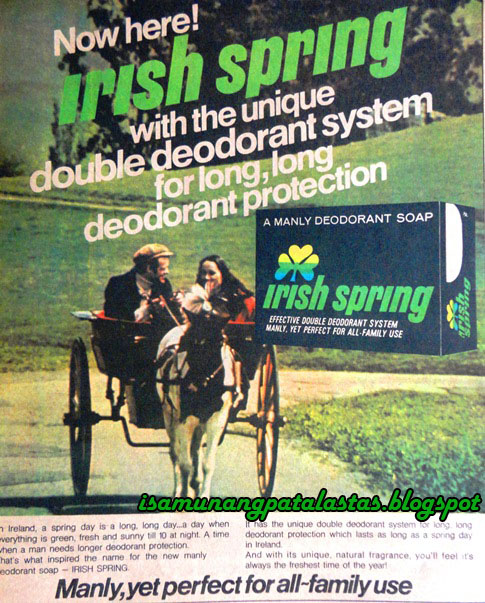 |
| THE FIRST TIDE LAUNCH ADS, Sunday Times Magazine, 1957. |
The powdered laundry detergent that would revolutionalize
how Filipino housewives would wash in the late 1950s was manufactured b7
Procter & Gamble back in 1946.
TIDE was not actually the first powdered detergent; pulverized soap was known as far back as the 1880s. But TIDE—originally designed for heavy-duty machine cleaning, was a major improvement as it was made with synthetic alkylbenzene sulfonates that made machine washing with hard water possible.
TIDE was not actually the first powdered detergent; pulverized soap was known as far back as the 1880s. But TIDE—originally designed for heavy-duty machine cleaning, was a major improvement as it was made with synthetic alkylbenzene sulfonates that made machine washing with hard water possible.
Test-marketed in 1946, TIDE was dubbed as the world’
first heavyweight detergent, and was rolled out nationally in 1949. TIDE became
a national hit, and in 1957, was launched in the Philippine market. At that
time, manual detergent bars were widely used all over the country; the use of
powder was unheard of.
 |
| PART OF A SERIES OF TIDE LAUNCH ADS, 1957 |
When the first English ad for TIDE came out that year, the
detergent was touted as a product of modern science, a “Sensational New Washing
Discovery---TIDE washes clothes cleaner than any other soap.” The
superior-cleaning claim was backed by its international success in the U.S.,
England, Canada, France, Belgium, Mexcio, Cuba and Venezuela.
In its first year TIDE was pushed by field marketing and
radio advertising, novel initiatives that P&G would be well known for.
“No need to change the way you wash—just change to TIDE!”,
the ads encouraged, and soon, Filipinos were ditching their old-fashioned bars
for the new powdered detergent packed in that iconic box and pouch with bright red orange
and deep yellow concentric circles forming the backdrop for the TIDE fonts in
blue. They were not only washing clothes with it, but used it for dishes and
utensils too—to great effect!
Traditional bar makers countered that TIDE—being in
powder form—led to wastage and is therefore more expensive to use. Hand-held
bars give the user more control, as the user can regulate the amount of product
used via the number of scrubbing. Thus TIDE launched “value for money”
testimonial ads around 1959, to convince housewives that in the long run, TIDE
is more cost-effective.
For the next decade, TIDE lived up to its promise--“Never
before such a washing sensation!”, prompting competition like Philippine
Refining Co., to launch its own powdered detergent brand that would give TIDE a
stiff competition—Breeze. TIDE would also be known for its iconic vernacular TV
commercials in the 1960s—“Utos ni Mayor”, “Puputi ang damit kahit hindi ikula!”,
“Balik-Tide”.
SOURCES:
Tide Brand: https://en.wikipedia.org/wiki/Tide_(brand)
P&G Philippines Brand History: https://www.pg.com/en_PH/company/history/historydetail.shtml



















